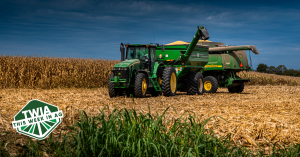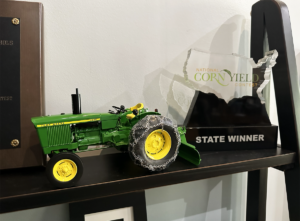“There’s got to be a better way.” Those words were expressed to me last week at the World Ag Expo. I had just completed my presentation, “Breathe New Life into Your Soil”, when a nice lady and her husband approached me. She introduced herself as a multi-generational rancher who grows alfalfa and orchard grass for their cattle herd. She is in the process of transitioning the family farm, located near the California-Oregon border, from her father. She admitted that he had been running the farm the same way for the past four decades (sound familiar?).
Upon closer examination of the farm books, she is concerned about the excessive fertilizer he applies, especially nitrogen, and the impact it is having on her soil, her end-product (beef), the environment and her production costs. Her story is not unique. I hear it all the time. The ability to lower input costs is certainly a carrot that lures many growers to exploring regen ag practices. But other benefits soon emerge. Like water holding capacity within the soil. Every 1% increase in organic matter adds 25,000 gallons/acre of water holding capacity to the soil. Not surprisingly, when I shared that talking point last week, it quickly earned the undivided attention of all the west coast growers in attendance. According to my co-presenters, Josh Bowman and Wyatt Flory, by building organic matter and water holding capacity within their soil – via cover crops, intensive grazing and applying carbon-based products – has enabled them to increase yields in their New Mexico pecan orchards by 75% during the past four years.
Short-term pain, long-term gain? That seems to be the sentiment felt by many I’ve spoken to recently within the farming community. It’s a notion supported by the recent Purdue Ag Economy Barometer. Farmer sentiment has skyrocketed post-election, reaching its highest point in four years. The Farm Financial Index rose 13 points this past month, indicating that more farmers expect 2025 to be better than 2024. A telling indicator of long-term farmer optimism is that the Future Expectations Index this month was 47 points above the Current Conditions Index. This represents the widest gap in the history of the study. Of course, the current realities of farming remain challenging. New US Ag Secretary Brooke Rollins recently coined the US farm economy as being in the “worst economic straits in a century” (clearly, she did not live in the Midwest during the 1980s). Crop input prices, while stabilizing, remain historically high; interest rates remain high; significant debt is being carried over from 2024; and credit remains tight for many producers. The bellwether of our industry, John Deere, just announced a 30% drop in revenue this past quarter. Yet the farm income is expected to turn the corner: USDA is projecting a 30% rise this year. Granted, this is largely due to a projected $42 billion increase in government payments, but it’s still income – and spending power – to farmers, nonetheless. Now, before you gasp at the projected three-fold increase in taxpayer-funded payments to farmers, please note that most countries subsidize their farmers – and at much higher levels. EU farmers typically receive 50% more in government support compared to US producers. In terms of total spending on farm subsidies, China spends almost four times as much as the US. American politicians have long viewed food security as national security, which (along with their constituents’ desire for low food prices) is often used to justify subsidies.
Bullish on corn? Global corn supplies have plummeted to their lowest levels this century. All while the optimum planting window in Brazil is closing, and only 36% of the second corn crop is in the ground, compared to 59% a year ago. Corn prices are now at their highest levels in over a year and a half. We’ve seen an 80-cent rally since November. Cash prices along river terminals are nearly $5. This could not come at a better time for growers. And not only for cash flow. February is the month when federal crop insurance prices are set, so the higher the price in February, the better the marketing opportunity. Now, while the recent gains are encouraging, they still have some ways to go before offsetting high crop input costs. They’re far from the $7-8 prices experienced during the pandemic and the biofuels boom of the previous decade. But they are prompting many growers to rethink their planting intentions. Not that long ago, I was told ag lenders in the South were discouraging their farmers from planting corn. Now, in many cases, corn is looking more attractive than its chief competitor, soybeans.
For the second year in a row, this blog has just been honored by the National Agri-Marketing Association as Best Digital Tactic. Thanks for allowing me to share my stories about the world’s greatest profession.
Related Posts

This Week In Ag #100
Farmers grow food. That’s a simple and straight-forward premise. Or is it? We continue to shake our heads at survey results that reveal many consumers think their food comes from the grocery store. But what about the industry itself? If we’re being totally honest, we should ask: are we largely focused on growing food, or producing commodities?

This Week in Ag #29
We all do it. We track time by referencing memorable items that we or our family once possessed. “Back when he drove that blue Silverado”, or “when she had that yellow Labrador” are examples of how we recall events that shaped our lives. For farmers, those points in time are often defined by a tractor.

This Week in Ag #85
We’re now five weeks away from a national election. The economy, crime, securing the border and foreign policy are top issues for most voters. But what about farmers? For answers, just look at what they value most: family.

